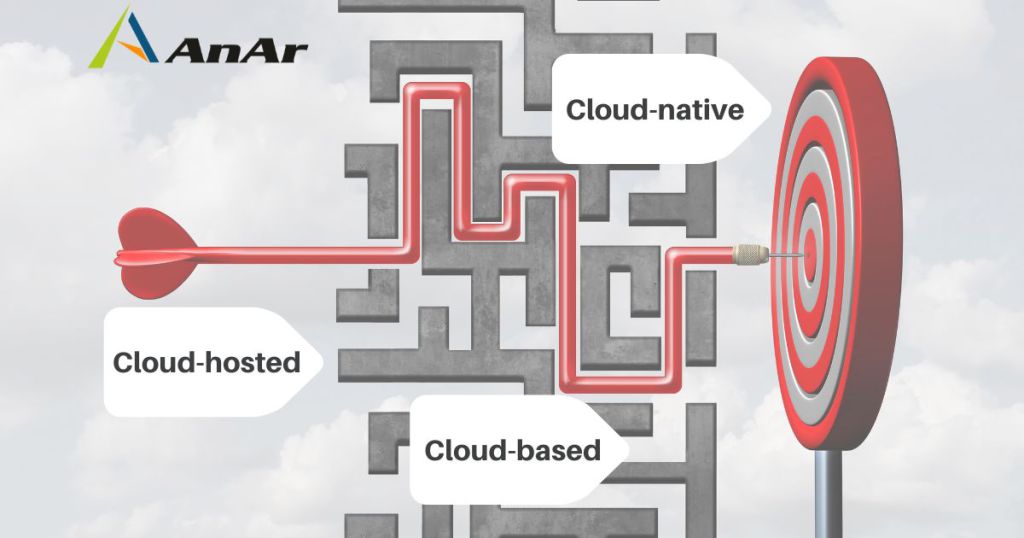There are several cloudy phrases used nowadays. Is cloud based preferable to cloud native? When my application is cloud hosted, am I deemed to be in the cloud? To clarify these various phrases, we will examine how cloud native, cloud based, and cloud hosted differ.
Cloud computing has seen the fastest growth since 2010. The global spending on cloud technologies has shot up by over $260 billion in the last decade, making the cloud the primary need for most small businesses and big corporates to move and build their applications using the latest technologies. Cloud computing provides these businesses much flexibility over the entire application development cycle. It helps them exponentially reduce the overall cost of setting-up in-house IT infrastructure and hiring talent to maintain it.
To remain competitive, many software companies have opted for a new approach that enables them to host their existing on-premises applications in the cloud. This approach of hosting legacy applications in the cloud has now given a new word called Cloud-washing. Although the cloud technology is not for this method, the still vendor sees this deployment as a way to deceive customers.
Cloud Native
Technology giants have invented cloud native platforms to facilitate and maximize the use of the cloud. Cloud native applications are designed from scratch to run in a public cloud, such as AWS, Azure, or GCP, and use cloud based technologies. When communicating with the cloud and deploying our applications, we require a service that enables better execution. Continuous integration, container engines, and orchestrators are all part of it. These components have been designed in cloud native to promote faster speeds, greater scalability, and lower management costs.
The microservice-based approach is an efficient and scalable way of developing applications where we break services into smaller pieces and reuse these services whenever possible.
Benefits of Cloud native development
- Instant Deployment: You can roll out updates without downtime or IT technicians’ help.
- Multi-sharing: This allows a single instance of the software to serve many customers. It makes it simpler to analyze consumption and improves software efficiency.
- Disposability: enables developers to quickly remove broken services and ensures that legacy issues do not persist in the framework.
- Continuous development: Developers can quickly resolve any problem by taking immediate feedback from the users and working on updates.
- Modularity: developers can break an application in micro-services and modify these services in any part of software without affecting the entire application.
- API Integration: The software can easily communicate and integrate with other applications and operating systems using APIs.
Cloud Based
There is also a middle ground between the cloud native and cloud hosted, which is called cloud based development. This approach gives you some of the cloud capabilities like higher scalability and availability. If you don’t wish to completely re-design your application, this approach can be the best fit.
Once you move your services to the cloud, you only have to pay for what you use. There is no need to worry about backups or maintaining a server. Moving your application to the cloud enables applications to scale up automatically to meet the increasing demand and better up-time for the overall infrastructure.
Cloud hosted
We discussed this as “cloud washing” earlier in the article. This approach enables organizations to migrate their legacy application to the cloud. These applications were designed in a monolithic fashion and used on-premises IT Infrastructure to run. These applications are refactored to use virtual resources before migrating them to the cloud, but the overall architecture remains the same. Cloud-hosting doesn’t allow applications to take advantage of shared services; as a result, application struggles with resiliency, and we can’t scale it as we can do in the cloud native or cloud hosted development approach.
Benefits of cloud hosted and cloud based Development
- Could-hosting could be the first approach for legacy applications toward cloud adoption.
- Employees can access the resources remotely from any location around the world, like cloud native.
- Businesses with limited physical space can reduce their reliance on on-premises resources like servers and other hardware.
Despite these benefits, many limitations remain with this approach. Migrating a legacy application to the cloud doesn’t mean it has adopted all the modern benefits customers want to take advantage of.
Let’s compare cloud native and could-based/hosted development approaches on factors like design, scalability, cost, maintenance, uptime, etc.
- Design — Cloud native approach is designed to deploy applications to the cloud by leveraging microservice-based fundamentals that can natively adopt comprehensive cloud scalability and accessibility. Comparatively, the cloud hosted/based approach was initially intended for local hosting and was designed only to fill the gaps with cloud technology.
- Scalability — Cloud native includes predefined components that are useful for running applications and services. However, both cloud based and cloud hosted development have users who want to choose from a variety of components that can benefit their business. It is easy to scale with all the three technology options; however, cloud native has the edge over the other two as it can easily provide more services under its belt by meeting clients’ and businesses’ scalability needs..
- Maintenance — Cloud native approach is designed to deploy applications to the cloud by leveraging microservice-based fundamentals that can natively adopt comprehensive cloud scalability and accessibility. Comparatively, the cloud hosted/based approach was initially intended for local hosting and was designed only to fill the gaps with cloud technology.
- Cost — Cloud native development approach is cost-effective for new applications or technology Products. Many businesses take a staged approach for cloud migration to manage upfront costs with cloud native. Wherein they start with a cloud hosted approach and plan to move towards cloud native. In the case of legacy application migration, cloud native will need architecture-level changes and will call for redeveloping most of the application components.
- Uptime — All three platforms come with significantly consistent uptime. Businesses often require 99.9% uptime to meet their business obligation, so they have to go with a cloud native approach.
Conclusion
From the above discussion, it is clear that all businesses who want to thrive and be competitive need to adopt the cloud and especially go with Cloud native applications. Cloud technology is at the forefront of a wave of new technological possibilities that goes beyond simply storing and hosting. Haven’t moved to the cloud yet? AnAr specializes in the development of cloud native applications and also can support you in migrating to the cloud in a phased manner. Please get in touch with us to begin your journey.






